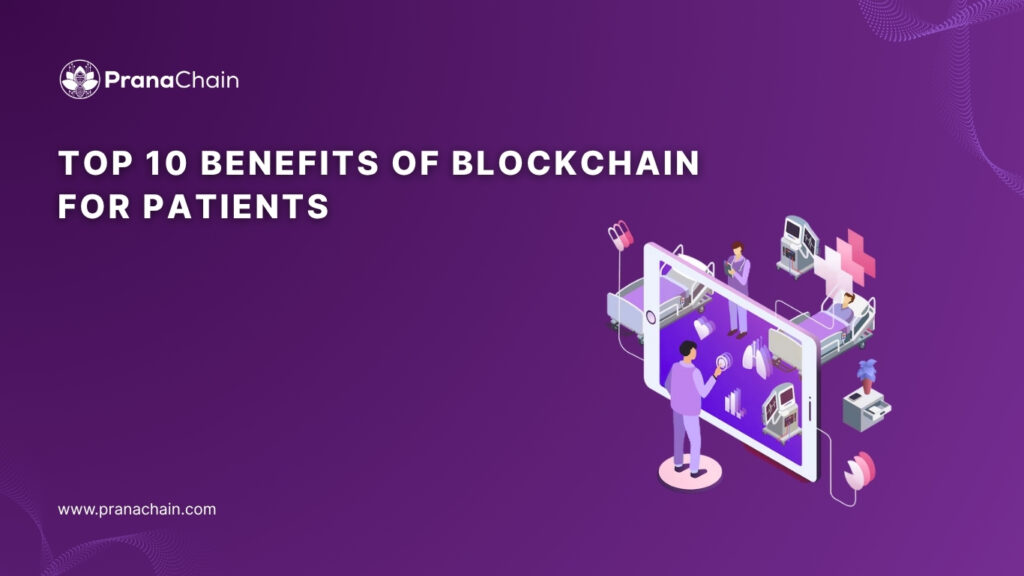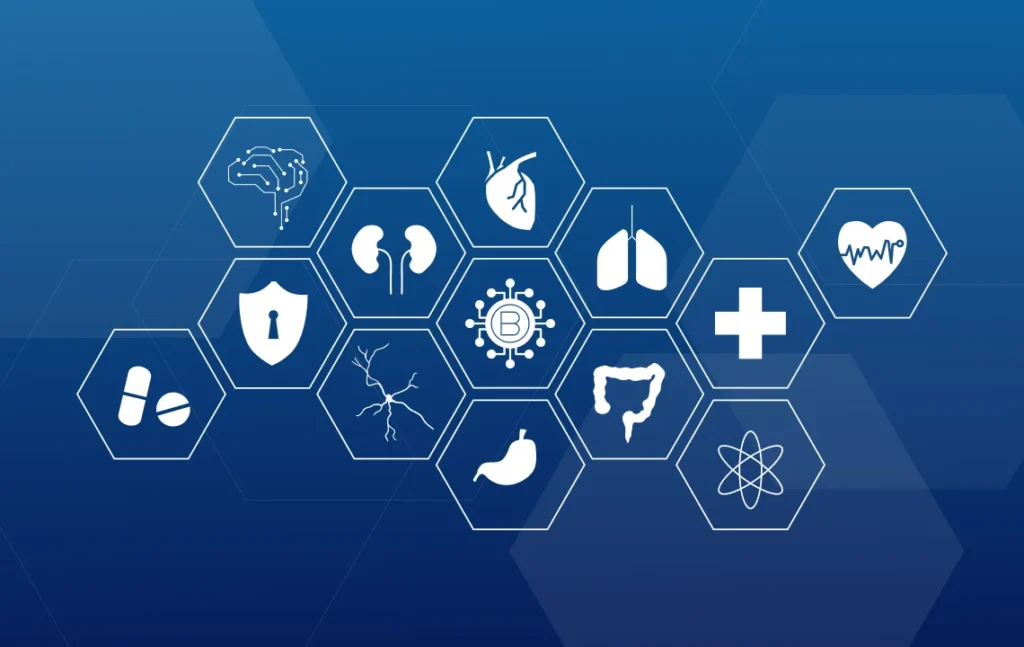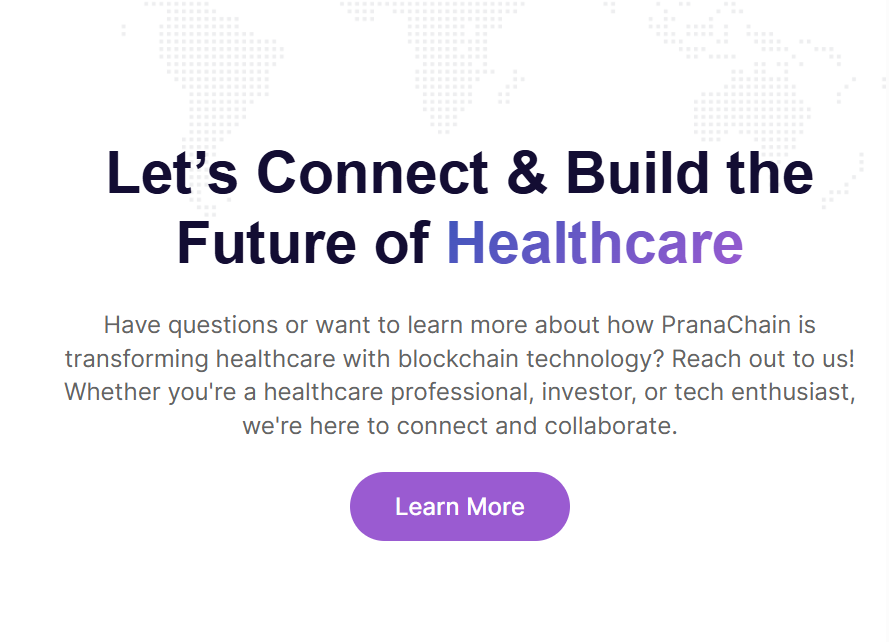
In an age where health data is scattered, insecure, and often out of the patient’s control, blockchain for patients is rewriting the rules. This technology empowers individuals to take charge of their personal medical information, giving them secure access, privacy, and transparency like never before. Platforms like Pranachain are pioneering patient-first blockchain systems to solve major pain points in today’s healthcare. Here’s how blockchain is transforming the patient experience, one block at a time.

1. True Ownership of Medical Data
Traditional healthcare systems store patient data in centralized silos controlled by hospitals or insurance companies. But with blockchain for patients, individuals can own and manage their health records independently.
This decentralization ensures that the patient, not the provider, decides who can view, edit, or access their medical history. Ownership is recorded immutably, which means no one can tamper with or lose your health data.
2. Enhanced Privacy and Security
Blockchain’s built-in encryption and zero-trust architecture provide military-grade security for personal health information. Unlike centralized systems prone to hacks or breaches, blockchain uses distributed ledgers to ensure no single point of failure.
Patients have full control over data access. Only authorized professionals with patient consent can view specific records, making privacy a default, not a luxury.
3. Faster Access to Health Records
Blockchain allows instant access to verified medical records. Whether it’s during emergencies or routine checkups, patients and providers no longer have to wait for file transfers or paperwork to be processed.
For patients with chronic conditions or those traveling across borders, blockchain ensures health data is available anytime, anywhere.
4. Transparent Medical History
Every update to a patient’s medical record, such as prescriptions, diagnoses, or lab results, is permanently recorded on the blockchain. This builds a transparent and traceable medical history that both patients and doctors can trust.
With this level of visibility, mistakes are reduced and informed decisions become easier to make.
5. Seamless Interoperability Between Providers
Healthcare fragmentation is a major challenge today. Blockchain breaks these silos by creating a shared, secure framework where health data can move easily across providers, labs, and insurance networks.
Patients no longer need to carry physical files or explain past treatments from memory. One digital identity can unlock all their health data, wherever they go.
6. Reduced Healthcare Fraud
Fraudulent claims and counterfeit prescriptions cost billions globally. Blockchain combats this with timestamped, tamper-proof transactions that make forgery nearly impossible.
Smart contracts can even automate claim verification, flagging inconsistencies in real-time and ensuring patients aren’t billed for services they didn’t receive.
7. Real-Time Insurance Verification
Blockchain for patients streamlines insurance processes by enabling real-time access to verified treatment data. This drastically reduces claim delays and disputes.
Patients can share treatment proof instantly, while insurers can verify authenticity without repeated paperwork. This saves time, cost, and frustration on both sides.
8. Cost Savings in Medical Transactions
By eliminating middlemen and reducing manual errors, blockchain brings down administrative and transaction costs in healthcare. For patients, this means lower bills and fewer redundant tests.
Digital health wallets powered by blockchain can also support micro-payments, tokenized incentives, and seamless billing for consultations, medications, and services.
9. Personalized Patient-Centric Healthcare
When patients control and manage their own data, healthcare becomes more personalized. Blockchain enables data-driven tools and AI to recommend treatments, diets, or routines tailored to each individual.
This kind of patient-centric approach improves health outcomes, especially for those managing chronic or long-term conditions.
10. Empowered Participation in Research
Patients can choose to share their anonymized health data for medical research, clinical trials, or drug development. Through blockchain, this process becomes consent-based, secure, and even rewarding.
With platforms like Pranachain, patients can receive tokens or incentives for contributing to scientific advancements while maintaining full privacy and ownership.
Conclusion: Blockchain for Patients Is the Healthcare Revolution We Need

The future of healthcare is not just about advanced treatments or high-end technology. It’s about giving patients control, transparency, and trust, all of which are made possible through blockchain for patients.
From securing sensitive data to enabling real-time access and powering personalized care, blockchain places the patient at the center of the healthcare system. It eliminates inefficiencies, reduces fraud, and empowers people to actively participate in their wellness journey.
As healthcare continues to digitize, platforms like Pranachain are leading the way in delivering blockchain solutions that truly benefit patients. The shift has begun. Are you ready to take control of your health data?
Start your journey with Pranachain and experience what patient-first healthcare truly looks like. Join the movement that’s redefining trust in digital health. Your data. Your choice. Your chain.

